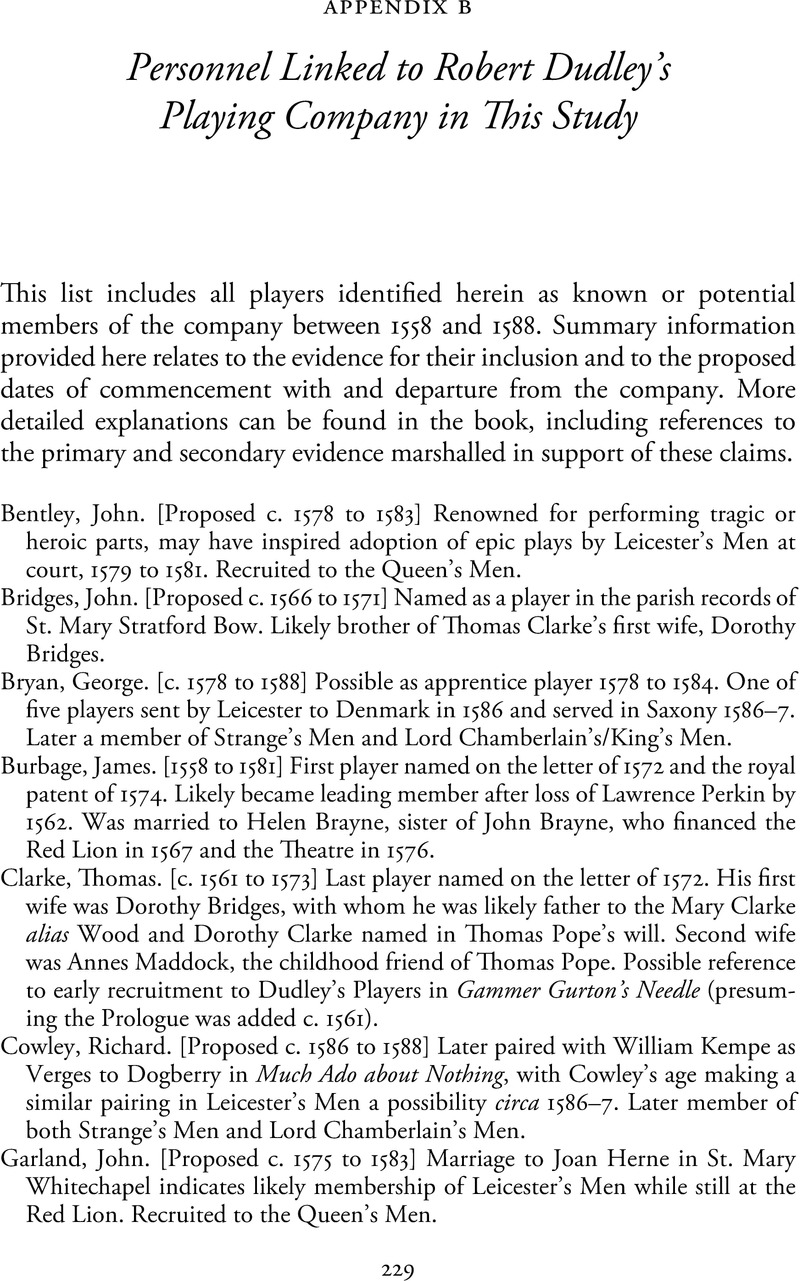Book contents
- Leicester’s Men and their Plays
- Leicester’s Men and their Plays
- Copyright page
- Dedication
- Contents
- Figures
- Preface
- Acknowledgements
- Introduction
- Chapter 1 Starting Points
- Chapter 2 The First Decade (1558–1567)
- Chapter 3 The Second Decade (1567–1577)
- Chapter 4 The Third Decade (1578–1588)
- Afterword
- Book part
- Appendix A Summary Itinerary of Robert Dudley’s Playing Company (1559–1588)
- Appendix B Personnel Linked to Robert Dudley’s Playing Company in This Study
- Appendix C Chronology of Plays Attributed to Dudley’s Players and Leicester’s Men
- Bibliography
- Index
- References
Appendix B - Personnel Linked to Robert Dudley’s Playing Company in This Study
Published online by Cambridge University Press: 08 November 2023
- Leicester’s Men and their Plays
- Leicester’s Men and their Plays
- Copyright page
- Dedication
- Contents
- Figures
- Preface
- Acknowledgements
- Introduction
- Chapter 1 Starting Points
- Chapter 2 The First Decade (1558–1567)
- Chapter 3 The Second Decade (1567–1577)
- Chapter 4 The Third Decade (1578–1588)
- Afterword
- Book part
- Appendix A Summary Itinerary of Robert Dudley’s Playing Company (1559–1588)
- Appendix B Personnel Linked to Robert Dudley’s Playing Company in This Study
- Appendix C Chronology of Plays Attributed to Dudley’s Players and Leicester’s Men
- Bibliography
- Index
- References
Summary

- Type
- Chapter
- Information
- Leicester's Men and their PlaysAn Early Elizabethan Playing Company and its Legacy, pp. 229 - 231Publisher: Cambridge University PressPrint publication year: 2023



